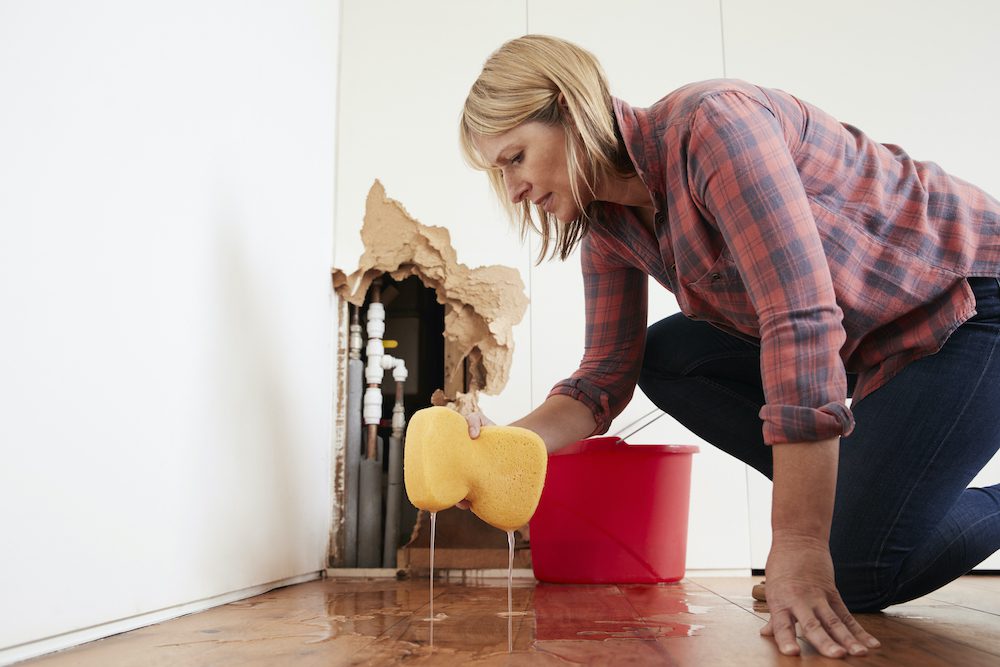Presented here down the page you can find more first-rate information related to Locating water leaks.

The moment you find a leak, calling your plumber for fixings is the very best option. However, some small water leakages may not show up. Right here are some hacks that help if you can not identify it with your naked eyes.
Early discovery of leaking water lines can mitigate a possible catastrophe. In addition to saving you cash, it will certainly lessen the irritation and also aggravation.
Inspect Water Intake
Assess your water expenses and also track your water usage. As the one paying it, you need to notice if there are any type of disparities. If you spot sudden changes, despite your intake being the same, it suggests that you have leaks in your plumbing system. Keep in mind, your water bill must drop under the very same array every month. A sudden spike in your bill indicates a fast-moving leak.
Meanwhile, a stable increase every month, even with the very same behaviors, reveals you have a sluggish leak that's also slowly escalating. Call a plumber to thoroughly examine your property, specifically if you really feel a warm area on your flooring with piping beneath.
Evaluate the situation and also check
Property owners should make it a behavior to inspect under the sink counters and also also inside cupboards for any bad odor or mold development. These two warnings suggest a leak so timely interest is required. Doing regular evaluations, even bi-annually, can conserve you from a major trouble.
Take A Look At the Water Meter
Every home has a water meter. Checking it is a surefire manner in which helps you uncover leaks. For beginners, shut off all the water resources. Make sure no one will certainly purge, utilize the tap, shower, run the washing machine or dish washer. From there, go to the meter and also watch if it will transform. Because nobody is utilizing it, there ought to be no activities. That suggests a fast-moving leakage if it relocates. Similarly, if you identify no changes, wait an hour or more as well as inspect back again. This indicates you might have a slow leakage that could even be below ground.
Asses Outside Lines
Don't forget to check your outdoor water lines as well. Needs to water permeate out of the connection, you have a loosened rubber gasket. One little leak can squander tons of water as well as surge your water expense.
Do a Food Coloring Test
When it comes to water consumption, 30% comes from commodes. If the shade somehow infiltrates your bowl during that time without flushing, there's a leakage between the storage tank and also dish.
Examine for discolorations and also compromising as most pipes and also home appliances have a life span. If you presume leaking water lines in your plumbing system, do not wait for it to escalate.
The moment you locate a leakage, calling your plumber for repair work is the ideal service. Some little water leaks may not be noticeable. Checking it is a proven way that aids you find leaks. One small leakage can squander bunches of water as well as increase your water bill.
If you presume dripping water lines in your plumbing system, don't wait for it to intensify.
WARNING SIGNS OF WATER LEAKAGE BEHIND THE WALL
PERSISTENT MUSTY ODORS
As water slowly drips from a leaky pipe inside the wall, flooring and sheetrock stay damp and develop an odor similar to wet cardboard. It generates a musty smell that can help you find hidden leaks.
MOLD IN UNUSUAL AREAS
Mold usually grows in wet areas like kitchens, baths and laundry rooms. If you spot the stuff on walls or baseboards in other rooms of the house, it’s a good indicator of undetected water leaks.
STAINS THAT GROW
When mold thrives around a leaky pipe, it sometimes takes hold on the inside surface of the affected wall. A growing stain on otherwise clean sheetrock is often your sign of a hidden plumbing problem.
PEELING OR BUBBLING WALLPAPER / PAINT
This clue is easy to miss in rooms that don’t get much use. When you see wallpaper separating along seams or paint bubbling or flaking off the wall, blame sheetrock that stays wet because of an undetected leak.
BUCKLED CEILINGS AND STAINED FLOORS
If ceilings or floors in bathrooms, kitchens or laundry areas develop structural problems, don’t rule out constant damp inside the walls. Wet sheetrock can affect adjacent framing, flooring and ceilings.
https://www.servicemasterbyzaba.com/blog/how-to-detect-water-leakage-in-walls/

I stumbled upon that piece about Finding hidden leaks while exploring the web. Appreciated our piece? Please share it. Help somebody else discover it. Thanks a lot for taking the time to read it.
Quick, reliable, call!